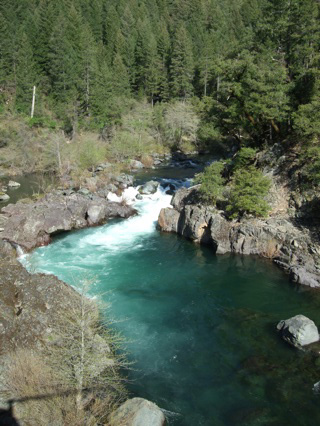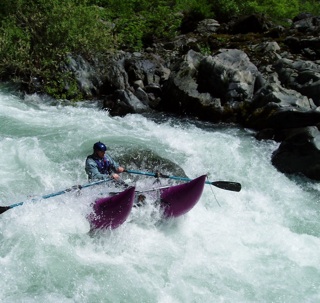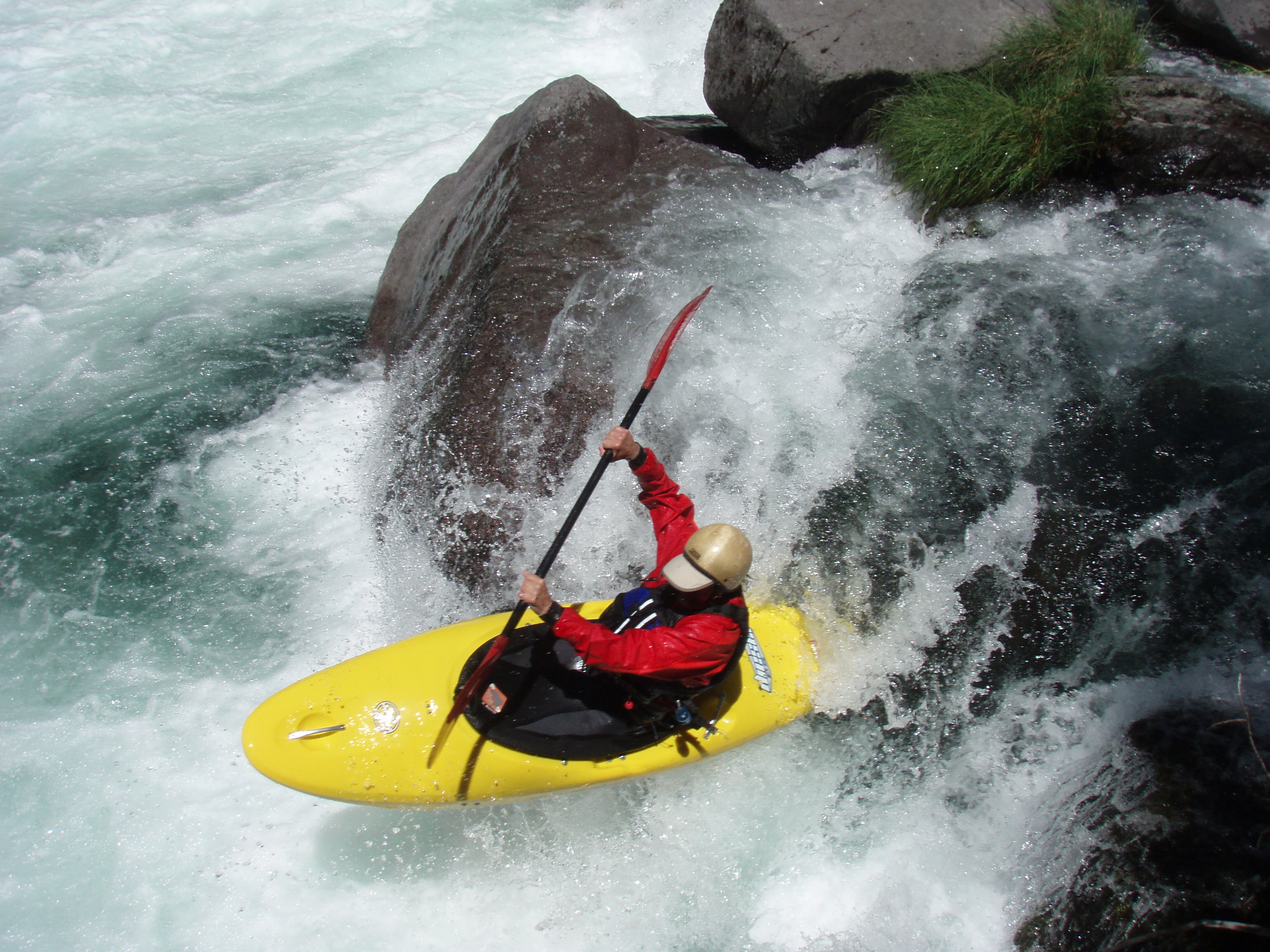McCloud (CA)
 The McCloud River’s spring-fed headwaters begin along the western slopes of the Cascade Range in Northern California. The river flows 59 miles through the Shasta Trinity National Forest until it joins with the Sacramento and Pit Rivers at Shasta Lake near Redding. Well known for its scenic waterfalls, unique geology and habitat for fish, the McCloud is divided into an “Upper” and a “Lower” section by the McCloud Dam and McCloud Reservoir. With historic base summer flows of 800 cfs, the Lower McCloud once offered excellent whitewater boating opportunities. Today, the river’s ecosystem is heavily impacted by the operations of the McCloud-Pit Hydroelectric Project, and whitewater boating opportunities on the Lower McCloud have almost been completely eliminated.
The McCloud River’s spring-fed headwaters begin along the western slopes of the Cascade Range in Northern California. The river flows 59 miles through the Shasta Trinity National Forest until it joins with the Sacramento and Pit Rivers at Shasta Lake near Redding. Well known for its scenic waterfalls, unique geology and habitat for fish, the McCloud is divided into an “Upper” and a “Lower” section by the McCloud Dam and McCloud Reservoir. With historic base summer flows of 800 cfs, the Lower McCloud once offered excellent whitewater boating opportunities. Today, the river’s ecosystem is heavily impacted by the operations of the McCloud-Pit Hydroelectric Project, and whitewater boating opportunities on the Lower McCloud have almost been completely eliminated.
The Project was built in 1960 and consists of the McCloud and Iron Canyon storage reservoirs, four dams (McCloud Dam, Iron Canyon Dam, Pit 6 and Pit 7), and three powerhouses (James B. Black, Pit 6 and Pit 7). Approximately 90% of the McCloud River is diverted out of its channel at the McCloud Dam and is tunneled 7.2 miles to the Iron Canyon Reservoir. From there, the river is tunneled an additional 3 miles to the James B. Black Powerhouse, is discharged into the Pit River, and flows through the Pit 6 and Pit 7 reservoirs and powerhouses.
Only 200 cfs flows in the Lower McCloud throughout the year, harming native aquatic species and limiting whitewater recreation to when the dam spills in the winter. The project also has recreational access and safety issues on the Pit River. While there are flatwater recreational opportunities on the Pit 6 and Pit 7 reservoirs, there currently is no boating access there. Additionally, there is a dangerous Afterbay Dam below the Pit 7 dam. While this dam is designed to even out flows below the Pit 7 Powerhouse and improve safety, there have unfortunately been several fatalities at the site.
 PG&E’s 50-year license to operate the McCloud-Pit Project expired on July 31, 2011, and American Whitewater entered into a collaborative decision-making process when relicensing began in 2006. We are working with PG&E to develop non-motorized boating access to the Pit 7 Reservoir and improve or remove the Pit 7 Afterbay Dam to reduce the existing safety issues. Our overall goal in the relicensing process is to restore a more natural hydrograph to the Lower McCloud, which will bring high spring flows that gradually and steadily recede to summer base flows.
PG&E’s 50-year license to operate the McCloud-Pit Project expired on July 31, 2011, and American Whitewater entered into a collaborative decision-making process when relicensing began in 2006. We are working with PG&E to develop non-motorized boating access to the Pit 7 Reservoir and improve or remove the Pit 7 Afterbay Dam to reduce the existing safety issues. Our overall goal in the relicensing process is to restore a more natural hydrograph to the Lower McCloud, which will bring high spring flows that gradually and steadily recede to summer base flows.
A flow regime that mimics the unimpeded flows above the McCloud dam will not only restore the whitewater boating opportunities that have been lost, but will also be a significant step toward restoring the McCloud River. This type of flow regime will reduce fish stranding and dewatering of frog egg masses, help to reduce the amount of vegetation encroachment into the river channel, and support efforts to restore salmon and steelhead to the system.
American Whitewater has worked closely with Friends of the River to ensure that the relicensing process is open and transparent. We took action in 2010 when the Forest Service denied the public the opportunity for due process in the proceedings (see “AW Letter to the USDA Forest Service Chief and Regional Forester” on the right toolbar for more information).
A flow schedule that mimics the natural hydrograph with a spring snowmelt pulse and gradual recession balances a variety of needs on rivers, including aquatic resources, recreational opportunities, and power generation, and we look forward to seeing these changes with the new license after July 2011. Click here to see video of the McCloud. American Whitewater will continue to participate in the process – check back for updates!

Boaters Tell FERC About The McCloud River (CA)
09/14/2010 - by Dave Steindorf
The Federal Regulatory Energy Commission (FERC) held a meeting to receive public comment on the Draft Environmental Impact Statement for the McCloud/ Pit Hydroelectric project in Northern California. At this meeting paddlers showed up to tell FERC staff that the McCloud is an important river that should be open to all. Find out how you can help.
The contacts below include staff and volunteers working on this project. Make sure you are logged in if you wish to join the group.
| Title | Name | City |
|---|
